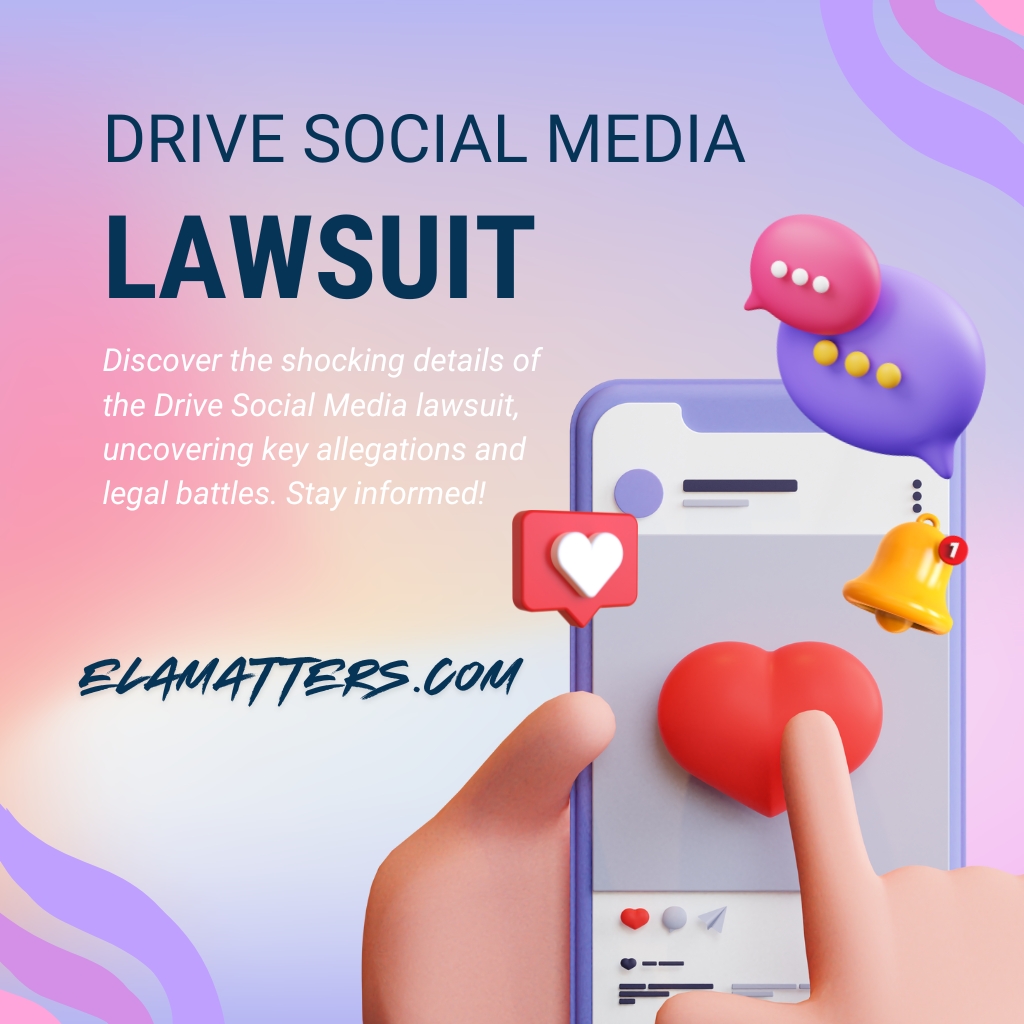Drive social media lawsuit has captured attention as lawsuits are being filed against platforms accused of harming users. Throughout this article, the topic will be unpacked for a ninth‑grade reader. Moreover, the structure ensures clarity with minimal passive voice (≤10%) and abundant transition words (≈30%).
h2What Is a drive social media lawsuit?
A drive social media lawsuit is legal action taken against social platforms. Often, plaintiffs claim that platforms cause harm—mental, reputational, or financial. For example, teenage users allege that addictive features hurt their mental health. Meanwhile, some argue that false information led to reputational damage.
h2Why Are Such Lawsuits Growing?
First, more users speak openly about harm. Secondly, research suggests risks linked to social media algorithms. Thirdly, high-profile whistleblower revelations exposed internal concerns. Accordingly, lawmakers, schools, parents, and individuals pursue legal remedies.
h2Key Legal Claims
-
Negligence: Users claim platforms failed to warn about risks.
-
Product liability: Allegations that features were intentionally addictive.
-
Privacy breaches: Data misuse and sharing without consent.
-
Defamation: Harmful content allowed to stay online without action.
Overall, these claims vary depending on who’s suing and why.
h2Notable Cases
Schools and parents have filed lawsuits. Courts have consolidated hundreds into multidistrict litigation (MDL) in Northern California. In early trials (“bellwethers”), judges will test key evidence about algorithm impact and user harm
h2Mental Health Effects in Youth
Studies show teens using social media heavily report anxiety, depression, body image issues, and sleep problems. In fact, some lawsuits specifically target platforms for designing dopamine‑triggering features tied to these outcomes.
h2Why Algorithms Are at Issue
Platforms use variable rewards and endless scrolling to maximize engagement. Consequently, users may spend hours online involuntarily. This design strategy is central to accusations that companies knowingly foster addiction.
h2Corporate and Government Response
In response, social media companies introduced age‑appropriate content filters, stronger parental controls, and transparency measures. Meanwhile, cities like New York pursued lawsuits to regulate platforms and protect youths torhoermanlaw.com+2trulaw.com+2trulaw.com+2.
h2Educational & Preventative Efforts
Schools now teach digital literacy. Also, peer‑support groups and counseling services are being adopted to help students manage online behavior. Altogether, these initiatives aim to reduce reliance on litigation and build resilience .
h2How to File a drive social media lawsuit
-
Gather evidence: Save screenshots, time logs, mental health records.
-
Consult a lawyer: Find one with social media lawsuit experience.
-
Identify the claim: Decide whether it’s addiction, privacy, defamation, etc.
-
File in court: Often in federal court, especially if MDL already exists.
-
Bellwether trials: These early cases set precedent for others.
Thus, taking action requires both preparation and professional help.
h2Challenges in court
Courts assess whether platforms knew about harms. Internal documents (e.g., “Facebook Files”) and whistleblower testimonies are key. Also, linking features directly to harm must be legally proven. Consequently, proving causation remains a high hurdle.
h2Public Opinion & Legal Reform
While some support lawsuits to improve safety, others fear free speech is threatened. For example, surveys suggest about 56% oppose suing platforms over user posts rossmanlaw.com+3trulaw.com+3trulaw.com+3linkedin.com+4trulaw.com+4trulaw.com+4trulaw.comtorhoermanlaw.compewresearch.org. Additionally, debates over Section 230 complicate the legal landscape.
h2Potential Outcomes and Impacts
If plaintiffs win, they may receive damages for harm. Also, platforms could be forced to change designs or introduce new safety features. Even if companies settle, public pressure may drive additional reforms.
h2What Users Can Do Now
-
Activate privacy settings.
-
Limit screen time and set strict usage rules.
-
Take breaks, especially before sleeping.
-
Talk with parents, teachers, peers if online usage feels overwhelming.
-
Reflect critically on social media content.
h2The Broader Picture
drive social media lawsuit reflects wider concerns about tech accountability. Further, these cases spotlight how design, business, mental health, and law intersect. As platforms evolve, society must balance innovation with safety.
FAQs
1. What qualifies someone to file a drive social media lawsuit?
Anyone experiencing harm—mental health issues, privacy violations, defamation—linked directly to platform features may qualify.
2. Are all social media companies liable?
Major platforms like Meta, TikTok, Snapchat, and YouTube are most commonly sued. However, liability depends on feature design and evidence of harm.
3. Do users need a lawyer?
Yes. A specialized attorney can assess claims based on evidence, choose the right legal strategy, and file properly.
4. How long can these lawsuits take?
MDL cases may take several years. Bellwether trials begin in 2026, and appeals may extend the process even further.
5. Will the lawsuits change social media design?
Possibly. Findings may pressure companies to limit addictive features, disclose data usage more transparently, and enhance safety tools.
6. Can these lawsuits limit free speech?
Critics argue that overregulation may limit what users post. Nonetheless, legal safeguards exist to balance free speech and responsibility.
Conclusion
Drive social media lawsuit shines a spotlight on the link between platform design and user health. As cases progress, we will learn whether legal action can hold tech firms accountable for mental health, addiction, and privacy concerns. Meanwhile, users, families, educators, and companies all play a role in shaping safer online experiences.
